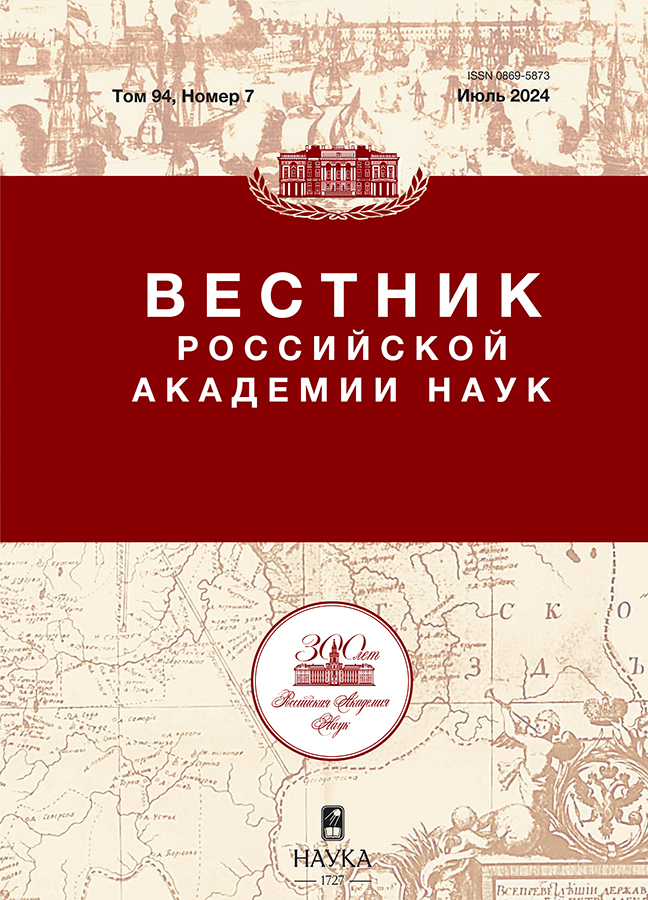A new approach to assessing the consequences of radiation on the eye
- Autores: Ostrovsky M.A.1,2, Feldman T.B.1,2
-
Afiliações:
- Lomonosov Moscow State University
- Emanuel Institute of Biochemical Physics of the Russian Academy of Siences
- Edição: Volume 94, Nº 7 (2024)
- Páginas: 658-664
- Seção: ИЗ РАБОЧЕЙ ТЕТРАДИ ИССЛЕДОВАТЕЛЯ
- URL: https://journals.eco-vector.com/0869-5873/article/view/659775
- DOI: https://doi.org/10.31857/S0869587324070065
- EDN: https://elibrary.ru/FMKDMI
- ID: 659775
Citar
Texto integral
Resumo
The authors propose a new approach to assessing the consequences of exposure to ionizing radiation on the structures of the eye. The approach is based on the results recently obtained by the authors together with employees of the Joint Institute for Nuclear Research in Dubna, according to which radiation exposure causes oxidation of the bisretinoids contained in the structures of the eye - the retina and retinal pigment epithelium. As a result of this oxidation, the fluorescence spectrum of bisretinoids shifts to the blue region of the visible spectrum. The shift in the fluorescence spectrum can be recorded non-invasively using the method of recording fundus autofluorescence, which is currently generally accepted in ophthalmology. Since the oxidation of bisretinoids occurs during radiation exposure, it becomes possible almost immediately after irradiation to assess the degree of impact of ionizing radiation on both the structures of the eye and the body as a whole. There is no analogue to such a non-invasive assessment of the effects of radiation on the body. The proposed approach may become important for assessing the radiation safety of nuclear industry workers, astronauts, and patients undergoing proton or gamma therapy.
Texto integral
Sobre autores
M. Ostrovsky
Lomonosov Moscow State University; Emanuel Institute of Biochemical Physics of the Russian Academy of Siences
Autor responsável pela correspondência
Email: ostrovsky3535@mail.ru
Faculty of Biology
Rússia, Moscow; MoscowT. Feldman
Lomonosov Moscow State University; Emanuel Institute of Biochemical Physics of the Russian Academy of Siences
Email: feldmantb@mail.ru
Faculty of Biology
Rússia, Moscow; MoscowBibliografia
- Tairbekov M.G., Petrov V.M. Medical and biological effects of ionizing radiation. M.: MEPhI, 2005.
- Yakovleva M.A., Feldman T.B., Lyakhova K.N. et al. Ionized radiation-mediated retinoid oxidation in the retina and retinal pigment epithelium of the murine eye // Radiat. Res. 2022. V. 197. P. 270–279.
- Feldman T., Yakovleva M., Utina D. et al. Short-Term and Long-Term Effects after Exposure to ionizing radiation and visible light on retina and retinal pigment epithelium of mouse eye // Int. J. Mol. Sci. 2023. V. 24. 17049.
- Schmitz-Valckenberg S., Holz F.G., Bird A.C. et al. Fundus autofluorescence imaging // Retina. 2008. V. 28. P. 385-409.
- Ostrovsky M.A. Molecular physiology of the visual pigment rhodopsin. Current directions // Russian Physiological Journal named after I.M. Sechenov. 2020, vol. 106, no. 4, pp. 401–420.
- Boulton M., Dontsov A., Jarvis-Evans J. et al. Lipofuscin is a photoinducible free radical generator. J. Photochem. Photobiol. B Biol. 1993, no.19, pp. 201–204.
- Sparrow J.R., Vollmer-Snarr H.R., Zhou J. et al. A2E-epoxides damage DNA in retinal pigment epithelial cells. Vitamin E and other antioxidants inhibit A2E-epoxide formation. J. Biol. Chem. 2003, vol. 278, no. 20, pp. 18207–18213.
- Dontsov A., Yakovleva M., Trofimova N. et al. Water-soluble products of photooxidative destruction of the bisretinoid A2E cause proteins modification in the dark. Int. J. Mol. Sci. 2022, vol. 23(3), 1534.
- Feldman T., Ostrovskiy D., Yakovleva M. et al. Lipofuscin-mediated photic stress induces a dark toxic effect on ARPE-19 cells. Int. J. Mol. Sci. 2022, vol. 23(20), 12234.
- Feldman T.B., Yakovleva M.A., Larichev A.V. et al. Spectral analysis of fundus autofluorescence pattern as a tool to detect early stages of degeneration in the retina and retinal pigment epithelium. Eye. 2018, vol. 32, pp. 1440–1448.
- Bourauel L., Vaisband M., von der Emde L. et al. Spectral analysis of human retinal pigment epithelium cells in healthy and AMD eyes. Invest Ophthalmol. Vis. Sci. 2024, vol. 65, 10.
- Schweitzer D., Gaillard E.R., Dillon J. et al. Time-resolved autofluorescence imaging of human donor retina tissue from donors with significant extramacular drusen. Invest. Ophth. Vis. Sci. 2012, vol. 53, pp. 3376–3386.
- Schweitzer D., Quick S., Schenke S., et al. Comparison of parameters of time-resolved autofluorescence between healthy subjects and patients suffering from early AMD. Ophthalmologe. 2009, vol. 106, pp. 714–722.
- Schweitzer D., Deutsch L., Klemm M. et al. Fluorescence lifetime imaging ophthalmoscopy in type 2 diabetic patients who have no signs of diabetic retinopathy. J. Biomed. Opt. 2015, vol. 20, pp. 61106.
- Ramm L., Jentsch S., Augsten R. et al. Fluorescence lifetime imaging ophthalmoscopy in glaucoma. Graefes. Arch. Clin. Exp. Ophthalmol. 2014, vol. 252, pp. 2025–2026.
- Jentsch S., Schweitzer D., Schmidtke K.U. et al. Retinal fluorescence lifetime imaging ophthalmoscopy measures depend on the severity of Alzheimer’s disease. Acta ophthalmologica. 2014, vol. 93, pp. 241–247.
- RF patent for invention No. 2651126 (04/18/2018): Feldman T.B., Ostrovsky M.A., Yakovleva M.A., Larichev A.V., Borzenok S.A., Arbukhanova P.M. A method for early detection of age-related macular degeneration of the retina.
- Utility model patent No. 176795 (01/29/2018): Larichev A.V., Panchenko V.Ya., Ostrovsky M.A., Feldman T.B. An optical device for examining the fundus of the eye to detect age-related macular degeneration of the retina.
- Feldman T.B., Dontsov A.E., Yakovleva M.A. et al. Photobiology of lipofuscin granules in the retinal pigment epithelium cells of the eye: norm, pathology, age. Biophys. Rev. 2022, vol. 14, pp. 1051–1065.
- Mao X.W., Boerma M., Rodriguez D. et al. Acute effect of low-dose space radiation on mouse retina and retinal endothelial cells. Radiat. Res. 2018, vol. 190, pp. 45–52.
- Mao X.W., Pecaut M.J., Stodieck L.S. et al. Space flight environment induces mitochondrial oxidative damage in ocular tissue. Radiat. Res. 2013, vol. 180, pp. 340–350.
- Mao X.W., Archambeau J.O., Kubinova L. et al. Quantification of rat retinal growth and vascular population changes after single and split doses of proton irradiation: translational study using stereology methods. Radiat. Res. 2003, vol. 160, pp. 5–13.
Arquivos suplementares












